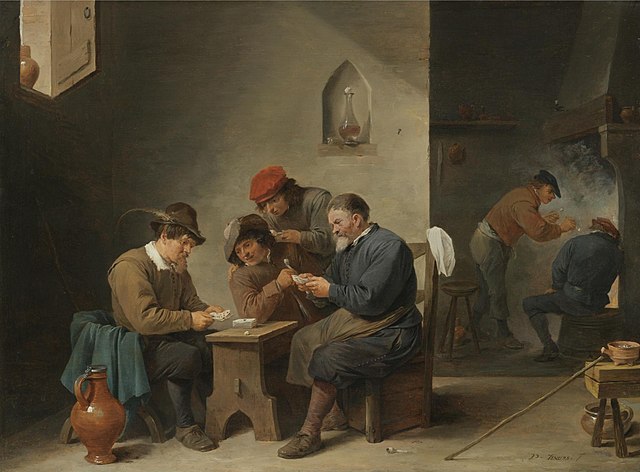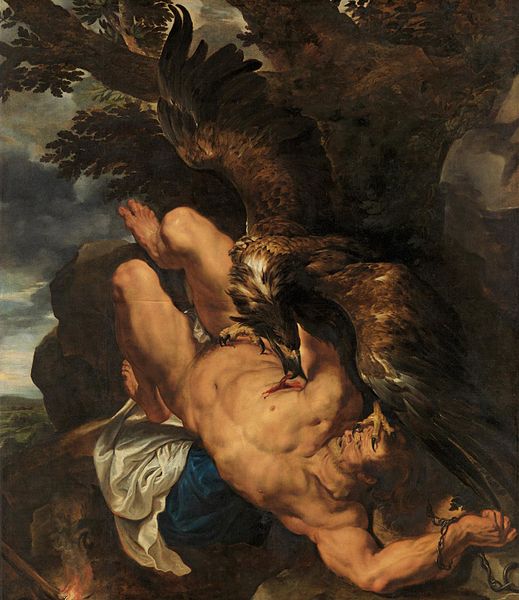David Teniers the Younger
David Teniers the Younger or David Teniers II was a Flemish Baroque painter, printmaker, draughtsman, miniaturist painter, staffage painter, copyist and art curator. He was an extremely versatile artist known for his prolific output. He was an innovator in a wide range of genres such as history painting, genre painting, landscape painting, portrait and still life. He is now best remembered as the leading Flemish genre painter of his day. Teniers is particularly known for developing the peasant genre, the tavern scene, pictures of collections and scenes with alchemists and physicians.
Portrait of David Teniers by Philip Fruytiers, 1655
Smokers in an interior, c. 1637, oil on panel
Village festival, 1645, oil on canvas
Card players, c. 1644–45, oil on panel
Flemish Baroque painting was a style of painting in the Southern Netherlands during Spanish control in the 16th and 17th centuries. The period roughly begins when the Dutch Republic was split from the Habsburg Spain regions to the south with the Spanish recapturing of Antwerp in 1585 and goes until about 1700, when Spanish Habsburg authority ended with the death of King Charles II. Antwerp, home to the prominent artists Peter Paul Rubens, Anthony van Dyck, and Jacob Jordaens, was the artistic nexus, while other notable cities include Brussels and Ghent.
Peter Paul Rubens, The Raising of the Cross, c. 1610–1611
Frans Hogenberg, the Calvinist Iconoclastic Riot of August 20, 1566 when many paintings and church decorations were destroyed and subsequently replaced by Late Northern Mannerist and Baroque artists.
Peter Paul Rubens and Frans Snyders, Prometheus Bound, 1611–12. Philadelphia Museum of Art. This painting is Flemish Baroque example of collaboration and specialization. Snyders, who specialized in animals, painted the eagle while Rubens painted the figure of Prometheus.
Frans Francken the Younger, Preziosenwand (Wall of Treasures), 1636. Kunsthistorischesmuseum, Vienna. This type of painting was one of the distinctly Flemish innovations that developed during the early 17th century.







